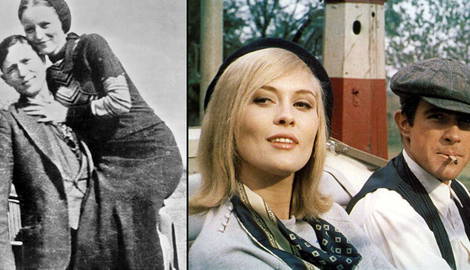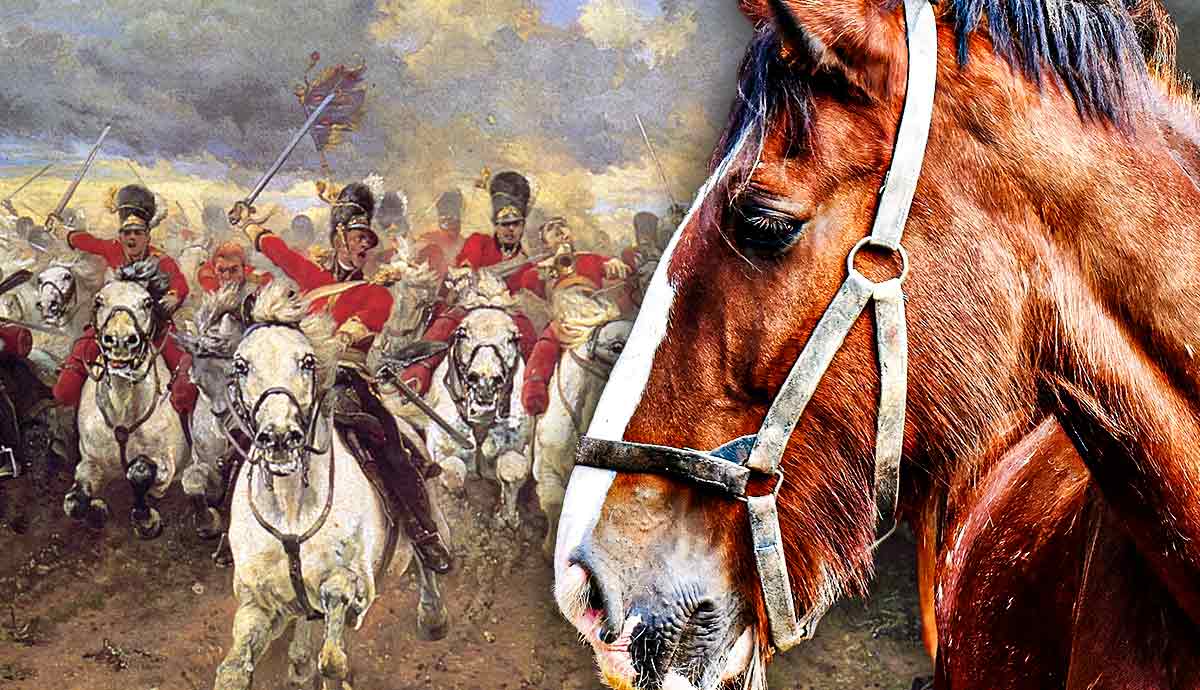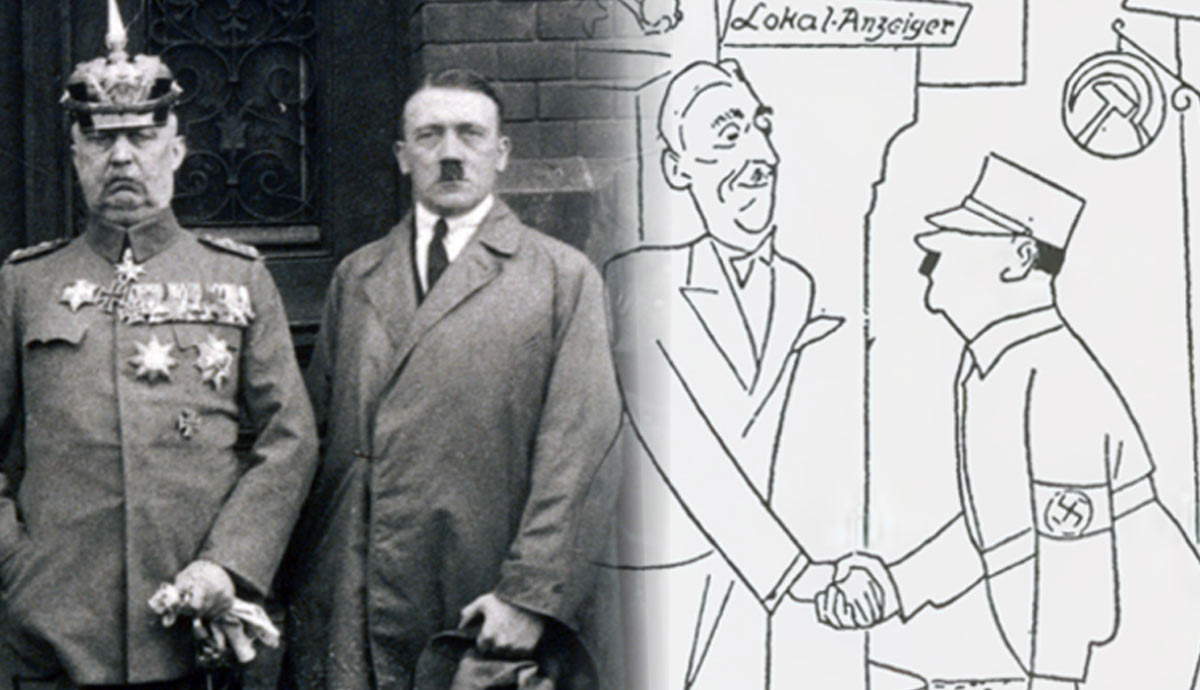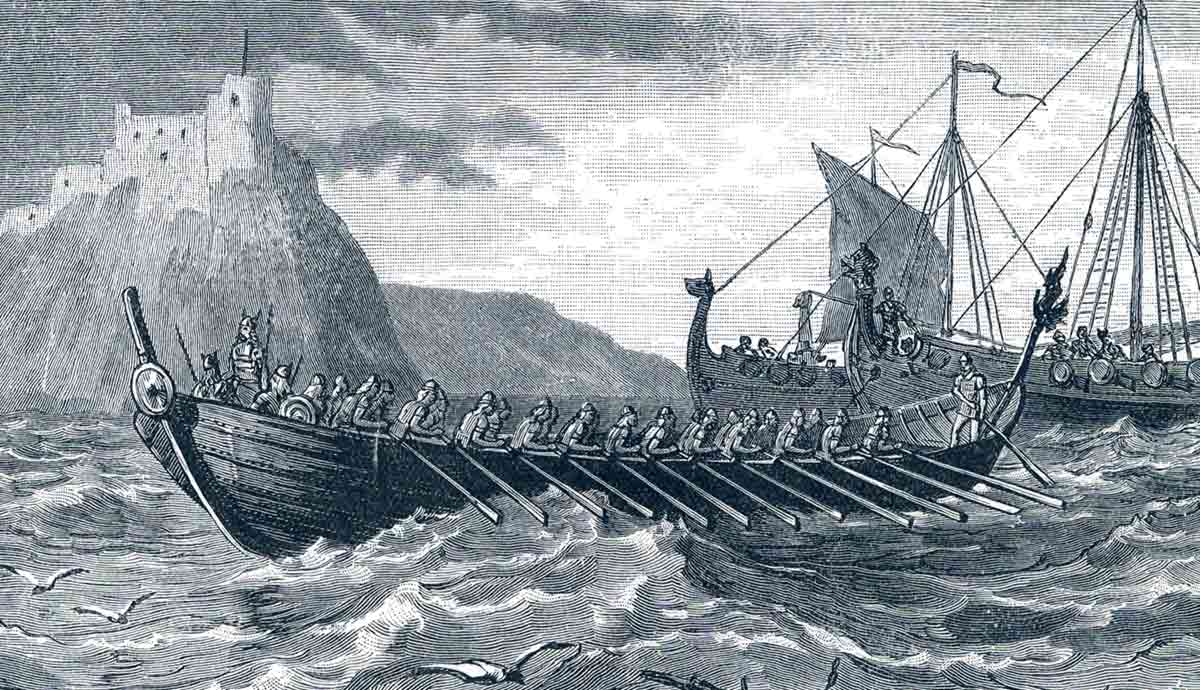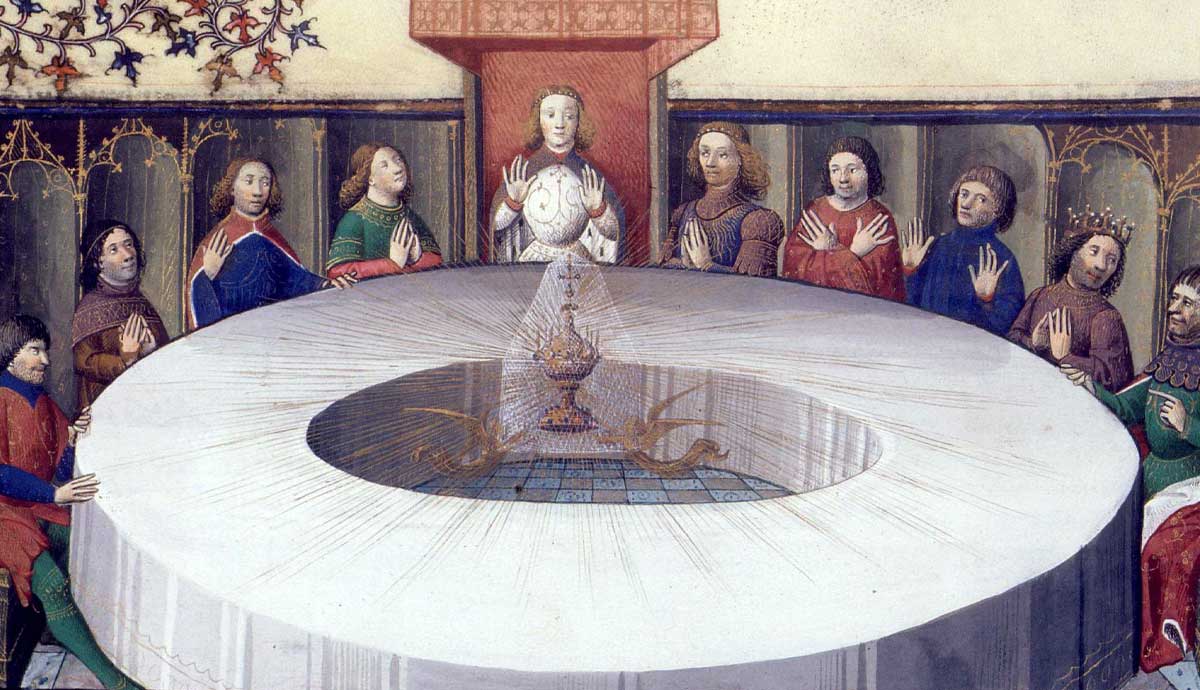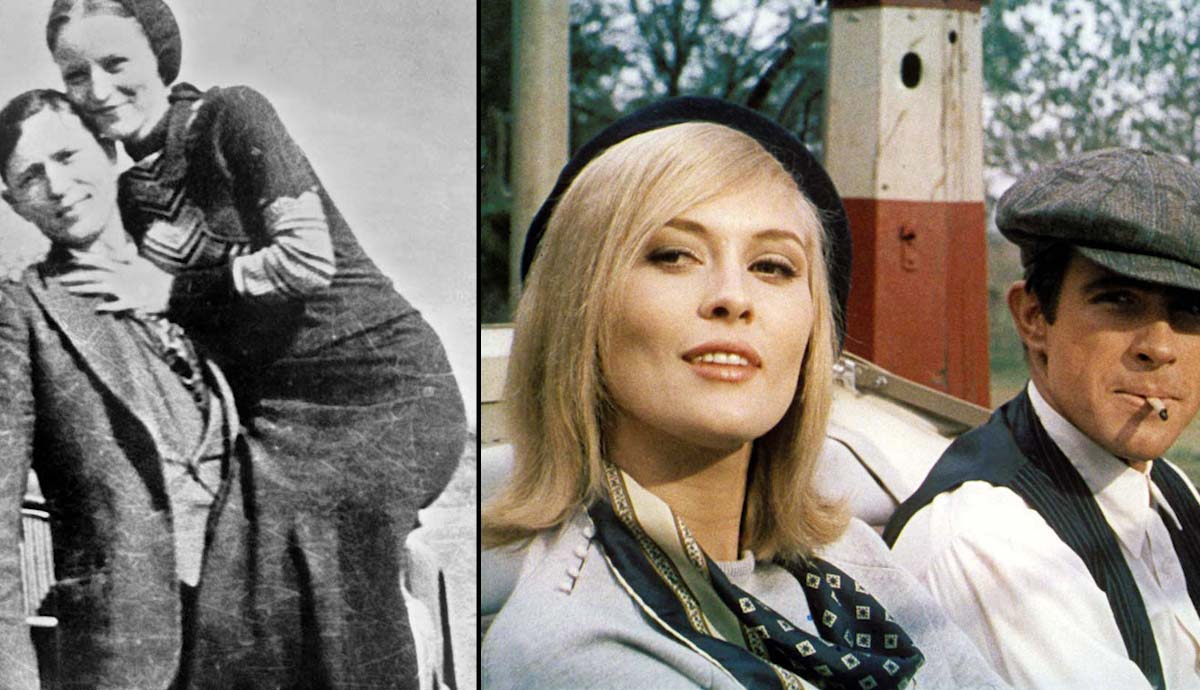
summary
- Bonnie Parker and Clyde Barrow were young lovers at the center of the Barrow Gang who executed a series of bank robberies, car thefts, and murders between 1932-1934.
- They rose to fame for their exploits during the Great Depression, as photos of the young pair made their exploits popular in the newspapers.
- After killing at least 12 people, the pair and their gang were taken down by a posse of law enforcement officers led by former Texas Ranger Frank Hamer in a brutal final shootout.
- Their story has become popular in the true crime genre, and they have become a symbol of rebellion and loyalty in popular culture.
The United States was built as a land of opportunity, and society was not particularly well-prepared for the Great Depression. While some consigned themselves to the misery of the era, others turned to unscrupulous and even criminal activities to get ahead. Two of the most infamous criminals of the 1930s were Bonnie and Clyde, who led a gang as they executed a series of thefts, bank robberies, and bloody murders between 1932 and 1934. Their story has been romanticized over the last century as one of love and danger, of inseparable lovers fighting the odds together. But who were the real Bonnie and Clyde, and why have they been romanticized rather than vilified?
Bonnie Parker

On October 1, 1910, Bonnie Elizabeth Parker was born. She was the second of three children born to Charles Robert Parker and Emma Parker (née Krause). Her family was from the agricultural town of Rowena in the center of Texas.
When Bonnie was just four, her father died, and her mother decided to move with her family to Cement City, an industrial part of West Dallas, where she would work as a seamstress. It was a rough neighborhood, and life for the Parkers became significantly more difficult without Charles’s financial support.

She began her schooling at the age of six. She was outspoken and liked to draw attention to herself. She also got into her fair share of fights while living in the rougher part of town. Independent and headstrong, she dropped out of school and married her first love, Roy Thornton. She was just 15 at the time.
The marriage would undergo serious stress, as Thornton led a life of crime and abandoned Parker for long periods of time. By 1929, the couple had split, although they never officially got divorced.
After their separation, Bonnie moved back in with her mother and worked as a waitress.
Clyde Barrow

Clyde Chestnut (Champion) Barrow was born on March 24, 1909, into a poor family living in Ellis County in East Texas. He was one of five children born to Henry Basil Barrow and Cumie Talitha Walker.
Clyde grew to hate school, and his upbringing was neglected. He loved watching silent movies, especially those portraying outlaws, and he often imagined himself to be Jesse James while playing with the other children.
In the early 1920s, he moved with his family to the slums of West Dallas. The family was so poor that they had to sleep under their wagon until they had enough money to afford rent. Despite having several legitimate jobs, Clyde was drawn to a life of crime and was arrested several times. His crimes became progressively more serious, from stealing turkeys to cracking safes, several robberies, and stealing cars.
Bonnie and Clyde Meet

In January 1930, at the age of 20, Clyde Barrow was introduced to Bonnie Parker, who was 19 at the time. It was love at first sight, and they spent the next few weeks in each other’s company. Their budding romance, however, was interrupted when Clyde was arrested. In April, he was sent to Eastham Prison Farm, but with the aid of Bonnie, who smuggled a revolver into the prison, Clyde was able to escape.
A week later, he was recaptured and sent to Texas State Penitentiary in Huntsville, where he was to serve a 14-year sentence. While there, he was subjected to physical and sexual abuse by another inmate. Barrow killed the man by caving his skull in with a metal pipe. Another inmate already serving a life sentence came to the aid of Barrow and claimed responsibility.

While in prison, Clyde cut off two of his toes in order to get out of laboring in the fields. Unbeknownst to him, his mother had managed to secure his release, and six days later, on February 2, 1932, he was a free man once again. His time in jail, however, had changed him. He was angry and bitter and sought revenge against the system that had allowed his abuse.
After being released, Clyde stayed with Bonnie while recuperating from his injuries. Within two weeks, he had convinced Bonnie to join him in a life of crime. With the aid of other hardened criminals, the Barrow gang was formed, and a crime spree ensued.
The Crime Spree Begins

In April, Bonnie and fellow gang member Ralph Fults were arrested while trying to rob a hardware store. Fults was tried and convicted, but after three months, the legal system had failed to indict Bonnie, and she was released. Meanwhile, Clyde and other gang members continued to rob banks and gas stations, and added murder to their list of crimes when they killed a Jeweler named John Bucher.
A spate of robberies and auto thefts began, but none were particularly successful in gaining large sums of money. In August, they wounded Sheriff C.G. Maxwell and killed Deputy Sheriff E.C. Moore when the two lawmen approached Barrow, fellow gang member Raymond Hamilton, and Ross Dyer, who were drinking moonshine at a country dance.
The following months would see more members join the gang, which became known for its brutality and seemingly indiscriminate killings. Clyde’s brother, Buck, was released from prison and, with his wife, Blanche, joined the Barrow Gang, which operated from a temporary hideout in Joplin, Missouri.

With their rowdy behavior, the gang drew the attention of a neighbor who phoned the police. Expecting what they thought was a bootlegging operation, the police responded in force, and a gunfight broke out. The police, not having the numbers to contain their suspects, could not stop the Barrow Gang from making their escape.
What was left behind at the crime scene by the Barrow Gang in the Joplin hideout became a treasure trove for the media. Apart from all the guns and ammunition, there were undeveloped rolls of film and a poem written by Bonnie Parker. The photographs were developed, and many showed Bonnie and Clyde posing with weapons in front of their car. Newspapers printed these iconic photographs, and the crime duo became an instant phenomenon in the minds of the American public.
The gang drove Fords exclusively because Clyde Barrow was a fan of the vehicle. He even wrote a letter to Henry Ford in 1934 saying:
“While I still have got breath in my lungs I will tell you what a dandy car you make. I have drove Fords exclusively when I could get away with one. For sustained speed and freedom from trouble the Ford has got every other car skinned and even if my business hasn’t been strictly legal it don’t hurt anything to tell you what a fine car you got in the V-8.”
In 2016, this building was purchased by Saundra Carr Cooper and her husband Stan who turned it into a guesthouse.
On June 10, 1933, Parker received third-degree burns on her right leg as a result of a car accident in which she failed to see the warning signs of a bridge under construction near Wellington, Texas. The car flipped and ended up in a ditch.
Her wounds were tended to by a nearby family of farmers.
The Robberies & Murders Continue

On June 23, after robbing R. L. Brown Grocery Market, Clyde Barrow and fellow gang member William D. Jones ran into trouble when approached by Marshal Henry D. Humphrey and Deputy Sheriff Ansel Salyers. The gunfight that followed claimed the life of Humphrey after he was shot in the chest, and the two outlaws made their escape.
In July, the gang checked into a guest house by the Red Crown Tavern in Platte City, Missouri. They seemed not to even attempt to be inconspicuous, and their actions attracted a lot of attention. They rented two cabins adjoined by a garage and took several actions that raised suspicions. The owner of the guest house noticed they backed the car into the garage “gangster style” in order to make a quick getaway. They also taped newspapers over the inside of the windows and paid for the accommodations and all their meals with coins.
When two of the gang members went into town for supplies, the alarm was finally raised, and police officers arrived to investigate. A gunfight ensued, and with superior firepower and a bit of luck, the Barrow gang was once again able to make their escape. When a bullet short-circuited the horn on the getaway car, the police took it as a sign of a cease-fire and did not engage the gang further.
There were, however, injuries. Buck Barrow was severely wounded in the head, and Blanche received micro-shards of glass in her eyes.

Buck was in a critical state as the group of criminals camped at Dexfield Park in Dexter, Iowa. Their activities once again drew the attention of neighbors, who alerted the police. For five days, they camped out at the site, and every day, two of them would undertake the dangerous journey into town to buy food and medical supplies. They drew suspicion by backing their car into parking spaces and leaving the engine running.
With law enforcement on the constant lookout, it was only a matter of time before the group was identified as the Barrow Gang. The final piece of evidence was the discovery of a bloodied bandage by a visitor to the park.
Police arrived in force with around 50 lawmen, and in the gunfight that followed, Barrow, Parker, and Jones escaped on foot, while Buck was shot in the back, and Blanche was caught and arrested. Buck would die from his injuries five days later after undergoing surgery. The Dallas Grand Jury issues indictments for murder against both Bonnie and Clyde. While Clyde already had many warrants out for his arrest, this was Bonnie’s first murder indictment.
In January 1934, the gang helped several inmates escape from Eastham Prison. Prison guard Major Joe Crowson was fatally wounded during the escape, and the event triggered a nationwide manhunt. The full force of the Texas government was brought to bear.

Frank Hamer, a retired Texas Ranger captain known for his toughness, was asked out of retirement to lead the efforts in bringing the Barrow Gang to justice. He put together a “posse” of six lawmen to hunt down the gang.
On April 1, two highway patrolmen were added to the list of murders as they approached Parker, Barrow, and fellow gang member Henry Methvin when they thought what they saw were motorists in need of help. They were shot mercilessly.
Five days later, another policeman lay dead. Sixty-year-old William Campbell. It would be their last murder. Frank Hamer was doggedly determined and spent day and night stalking his prey, following up on leads and waiting for the right opportunity to strike.

Fellow gang member Henry Methvin had been helping the police in an effort to gain clemency for his crimes. He helped set up the ambush that would claim the lives of Clyde Barrow and Bonnie Parker.
Early in the morning of May 23, 1934, the police spotted their quarry. Under the cover of foliage on the side of the road near Sailes, Louisiana, they opened fire on Bonnie and Clyde’s car. Every attempt was taken to make sure that the two criminals were killed. Death was instant for both of them. According to a statement made by two of the officers:
“Each of us six officers had a shotgun and an automatic rifle and pistols. We opened fire with the automatic rifles. They were emptied before the car got even with us. Then we used shotguns. There was smoke coming from the car, and it looked like it was on fire. After shooting the shotguns, we emptied the pistols at the car, which had passed us and ran into a ditch about 50 yards on down the road. It almost turned over. We kept shooting at the car even after it stopped. We weren’t taking any chances.”
The posse towed the car to a funeral parlor in the small town of Arcadia with the bodies still inside. People flooded the area, with the local population growing from 2,000 to 12,000. There were reportedly 20,000 people present at their funeral.
Aftermath

By the time of their death, Bonnie and Clyde had become infamous celebrities. Members of the posse appropriated many of the items from the car and sold them as souvenirs to the public.
Hamer took their gun collection, which Clyde’s mother later demanded back, highlighting that her son had never been convicted of murder in the courts. Sheriff Jordan, who was also present for the final attack, tried to keep what became known as the “death car,” but Ruth Warren, from whom the car had been previously stolen, sued him to get it back. She turned it into a popular traveling feature at amusement parks and flea markets before it became a permanent installation at the Nevada Race Track. Today, the death car and the shirt Cylde died in are on show at Buffalo Bill’s Resort in Las Vegas.
Bonnie and Clyde had entered the public imagination as daring outlaws challenging authority, but the reality of their murders eventually hit home, and the public opinion turned against the Barrow gang and the two lovers, Bonnie and Clyde. For a while, their romance intrigued the American public, but when they were eventually killed, their deaths were celebrated.
Their stories, however, were perfect for books, films, and even stage plays, and to this day, public interest in the story of Bonnie and Clyde has never waned.

The popular film Bonnie and Clyde was released in 1967, written by David Newman and Robert Benton, and directed by Arthur Penn. It starred Warren Beatty and Faye Dunaway as the popular pair and Gene Hackman as Buck Barrow. Bonnie and Clyde’s death scene was known as one of the bloodiest in American cinema at the time. It was nominated as one of the best movies of the year and hailed as a “paradigm-shifting classic” that defined the thriller genre.
The latest rendition in film is Netflix’s 2019 film The Highwaymen, with movie producers telling the story from the perspective of Frank Hamer, played by Kevin Costner. In music, Taylor Swift references the couple in her 2017 song “Getaway Car” from her album Reputation.

Bonnie and Clyde and the exploits of the Barrow Gang offered real-life entertainment to an American public beaten down in the era of the Great Depression. Bonnie was a woman, an unusual character for a hardened antagonist, and this fueled interest even further.
Bonnie and Clyde earned the reputation of one of the world’s most iconic crime duos and will be forever etched in the memory of American history.
